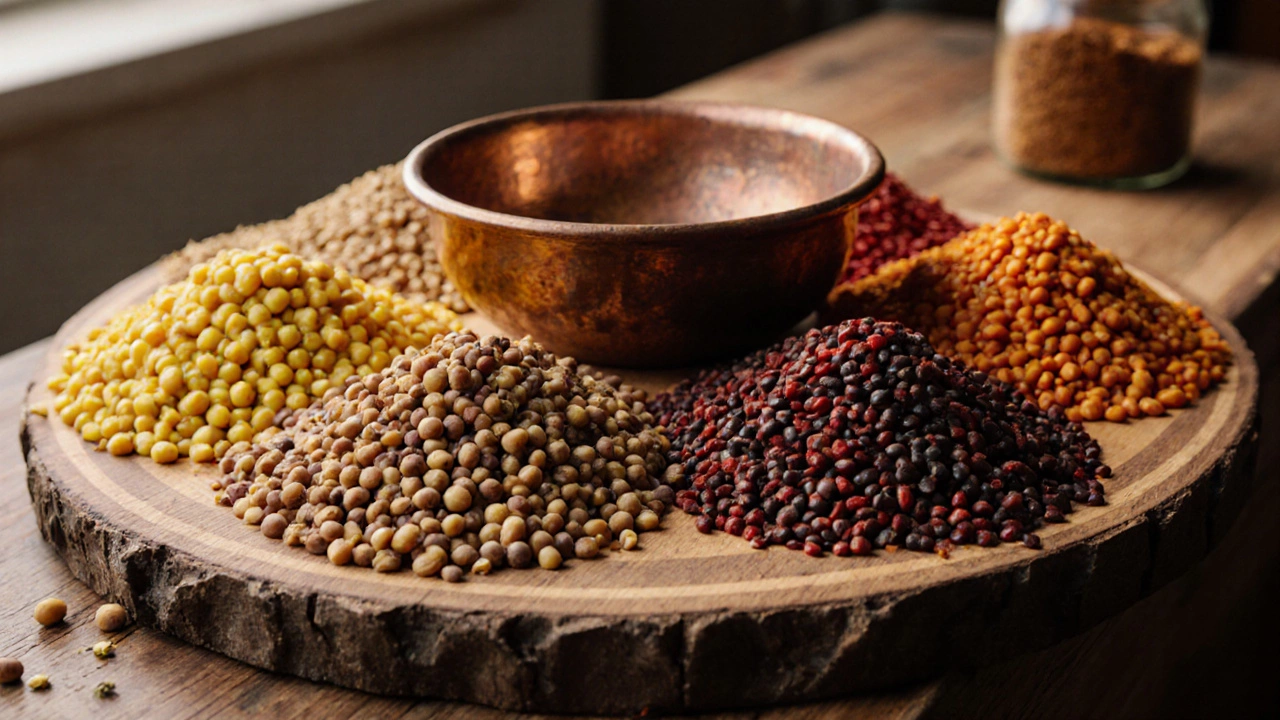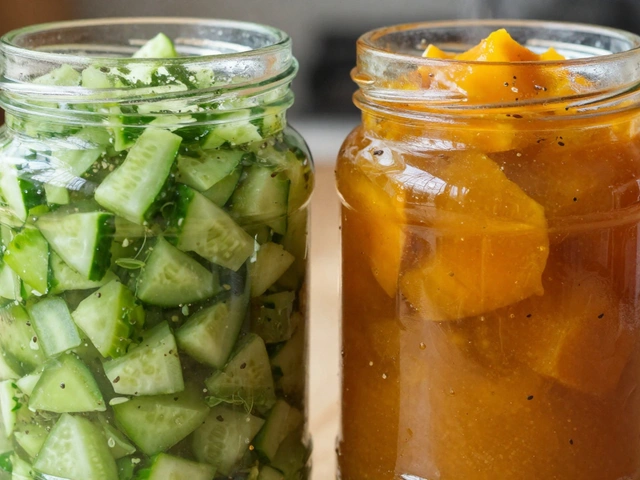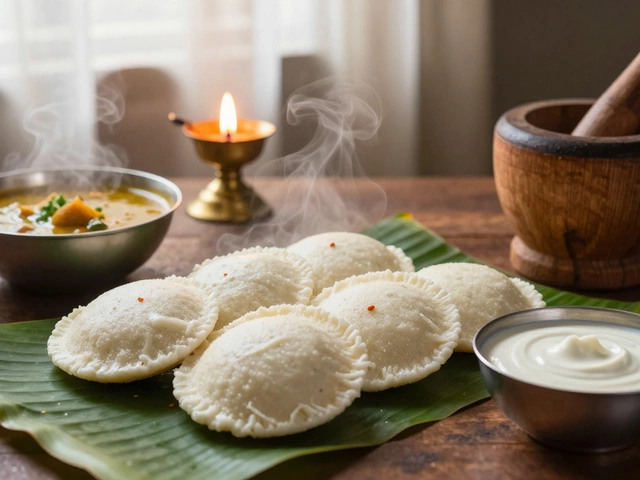Dal Nutrition Selector
Choose Your Priority
Ever wondered if the dal on your plate is actually boosting your health or just filling you up? You’re not alone. With so many varieties-chana, toor, moong, urad, masoor-pinpointing the healthy dal that aligns with your nutrition goals can feel like a guessing game. This guide breaks down the science, compares the top five dal types, and gives you practical tips to keep every spoonful as nutritious as possible.
What Exactly Is “Dal”?
Dal is a collective term for split pulses and whole lentils that form the backbone of Indian cuisine. The word covers everything from tiny yellow moong to robust red masoor, and each brings its own texture, flavor, and nutritional profile.
How We Judge Healthiness
When you hear “healthy,” most people think protein, fiber, and low sugar. In the world of dal, three extra factors matter:
- Protein the building block for muscles and enzymes
- Fiber helps digestion and steadies blood sugar
- Iron crucial for oxygen transport and energy
- Calorie density (you want the most nutrients for the fewest calories)
- Glycemic Index (GI) - a lower GI means a slower rise in blood glucose
We’ll score each dal against these benchmarks so you can see which one tops the list for your personal needs.
Quick Nutritional Snapshot of the Top Five Dals
| Dal Type | Protein (g) | Fiber (g) | Iron (mg) | Calories (kcal) | GI (approx.) |
|---|---|---|---|---|---|
| Moong Dal split yellow gram | 24 | 16 | 5.4 | 347 | 35 |
| Chana Dal split Bengal gram | 22 | 12 | 4.9 | 360 | 38 |
| Toor Dal split pigeon pea | 21 | 15 | 5.1 | 343 | 40 |
| Masoor Dal split red lentil | 25 | 10 | 3.5 | 329 | 32 |
| Urad Dal split black gram | 25 | 14 | 5.5 | 341 | 45 |
All numbers come from the USDA FoodData Central database (2024). Notice how the protein and iron values cluster close together, but the fiber and GI vary enough to tip the scales for specific diet plans.
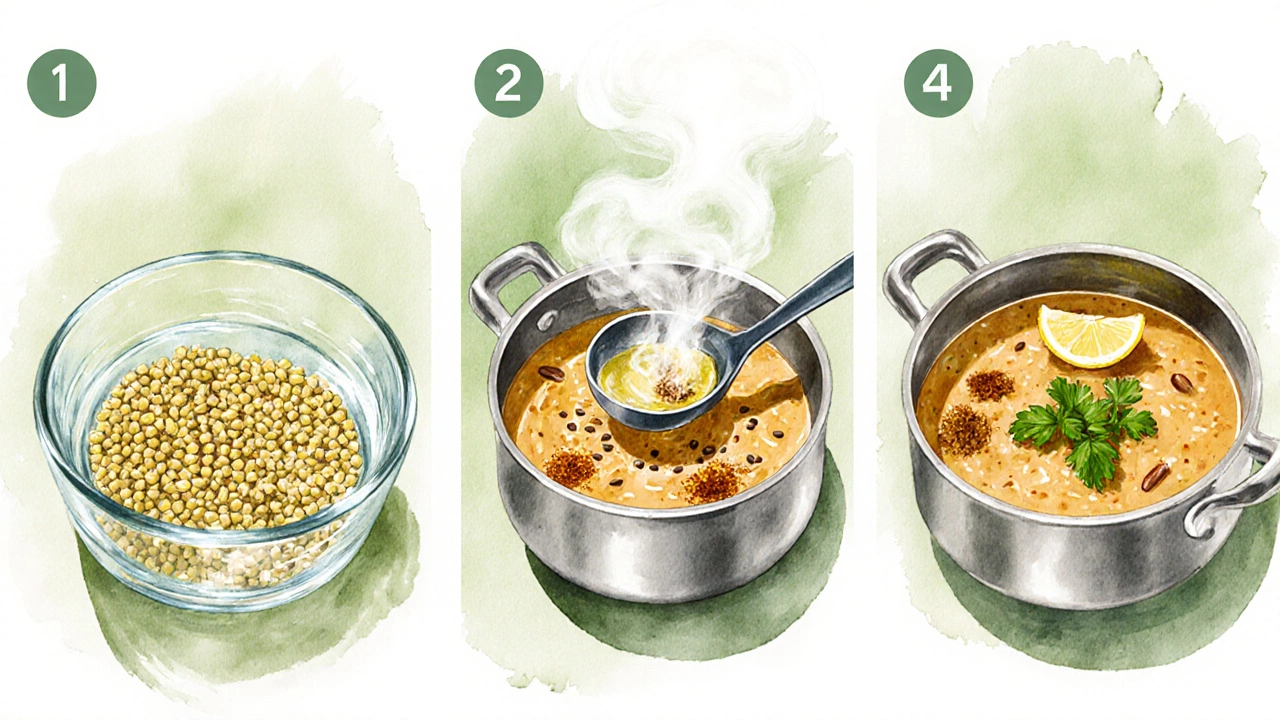
Choosing the Right Dal for Your Goals
Let’s match these stats to common health objectives:
- Muscle building or high‑protein diets: Moong Dal and Urad Dal both deliver ~25 g of protein per 100 g, making them top choices.
- Weight loss with high fiber: Fiber helps you feel full. Moong Dal leads with 16 g, followed closely by Toor Dal.
- Iron‑rich meals (especially for vegetarians): Urad Dal tops the list at 5.5 mg, a solid contribution toward the daily 18 mg recommendation for adult women.
- Low glycemic impact for diabetics: Masoor Dal has the lowest GI (≈32), meaning it raises blood sugar more slowly.
- Balanced overall nutrition with fewer calories: Masoor Dal also has the lowest calorie count (329 kcal) while still packing 25 g of protein.
In short, there isn’t a single “healthiest” dal-each shines in a different arena. Pick the one that aligns with your immediate priority, and you’ll still get a solid nutrient boost.
Simple Cooking Tips to Keep Nutrients Intact
Even the most nutritious dal can lose its edge if you overcook or add too much fat. Follow these quick habits:
- Rinse and soak: A 30‑minute soak cut cooking time in half, preserving heat‑sensitive B‑vitamins.
- Use minimal oil: One teaspoon of mustard or olive oil is enough for tempering spices-no need for heavy ghee unless you’re after extra calories.
- Don’t over‑boil: Aim for a soft yet slightly firm texture. Over‑boiling leaches iron into the cooking water, which you often discard.
- Finish with fresh veggies: Adding chopped spinach, tomatoes, or carrots at the end boosts fiber and micronutrients without extending cooking time.
- Season with spices: Turmeric, cumin, and coriander are antioxidant powerhouses that complement the dal’s natural benefits.
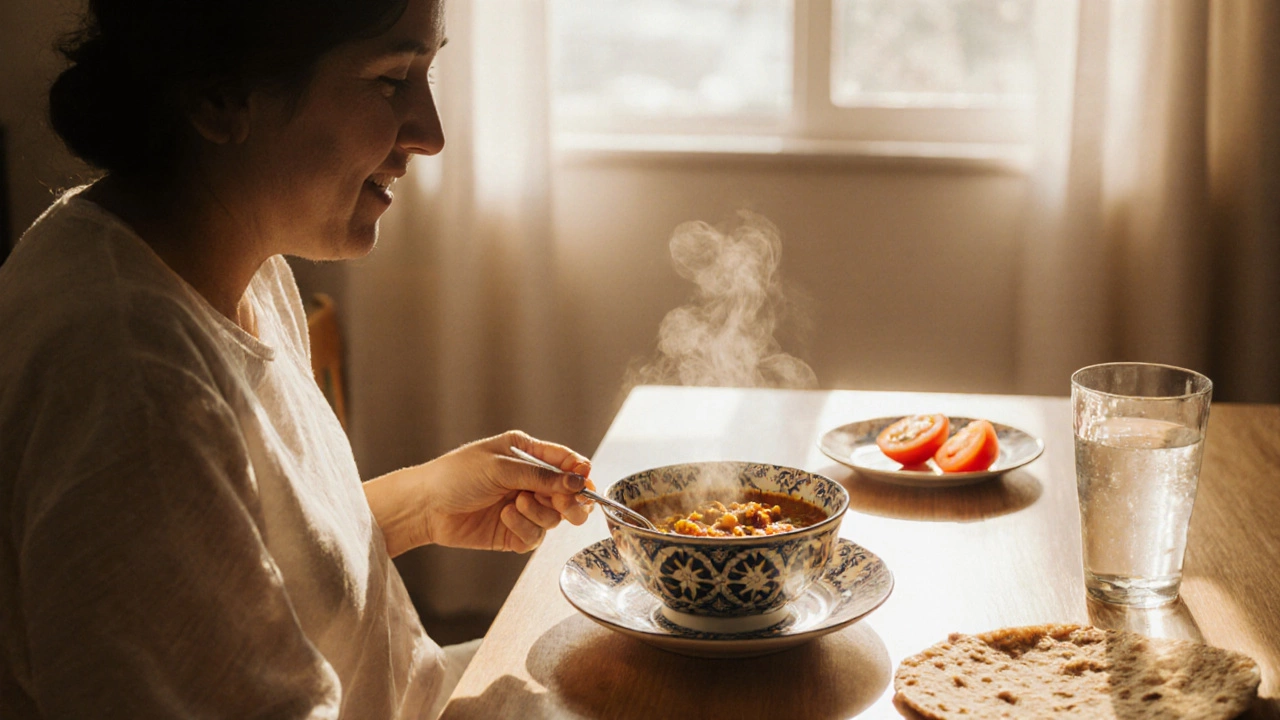
One‑Pot Simple Moong Dal Recipe (Ready in 20 Minutes)
- Rinse ½ cup Moong Dal and soak for 15 minutes.
- Heat 1 tsp oil in a saucepan, add ½ tsp mustard seeds, a pinch of asafoetida, and 1 chopped green chili.
- Stir in ¼ tsp turmeric and ½ tsp cumin powder, then add the dal with 2 cups water.
- Bring to a boil, then simmer 10‑12 minutes until the dal is soft but not mushy.
- Season with salt, a squeeze of lemon, and garnish with fresh cilantro.
This recipe keeps the protein punch of moong while delivering a low‑GI, fiber‑rich bowl in no time. Pair it with a small whole‑wheat roti or a side salad for a complete meal.
Key Takeaways
- All common dals are excellent protein sources; pick Moong or Urad for the highest levels.
- Fiber varies-moong leads, making it great for satiety and gut health.
- Iron is highest in urad; combine with vitamin C‑rich foods to boost absorption.
- For low‑glycemic needs, choose masoor or moong.
- Cook smart: soak, limit oil, and avoid over‑boiling to preserve nutrients.
Frequently Asked Questions
Can I eat dal every day without harming my kidneys?
Yes, for most people. Dals are low in sodium and high in potassium, which actually supports kidney function. If you have a specific kidney condition, talk to a doctor about portion size.
Is canned dal as nutritious as dried dal?
Canned dal often contains added salt and preservatives, which can lower its health score. The protein and fiber stay similar, but you lose control over sodium. Rinsing canned dal helps, but dried and properly cooked dal is still the better choice.
What’s the difference between dal and lentils?
All lentils are a type of dal, but not all dal are lentils. Dal includes split peas and beans like pigeon pea (toor) and black gram (urad), whereas lentils refer specifically to the Lens culinaris family (red, green, brown). Nutritionally, they’re very close.
How can I boost iron absorption from dal?
Pair dal with vitamin C‑rich foods like lemon juice, tomatoes, or bell peppers. Cooking with a little turmeric also helps, and soaking the dal reduces phytates that block iron uptake.
Is dal suitable for a low‑carb diet?
Dals contain about 50‑60 g of carbs per 100 g dry, so they’re moderate‑carb. If you’re on a strict keto plan, keep portions small (¼‑½ cup cooked) and combine with high‑fat foods like avocado or ghee to stay within your carb limit.
